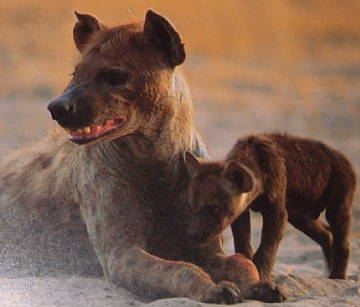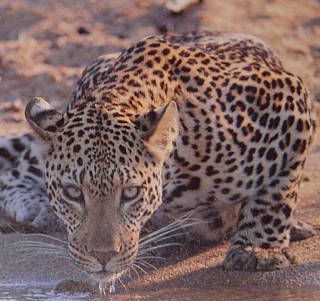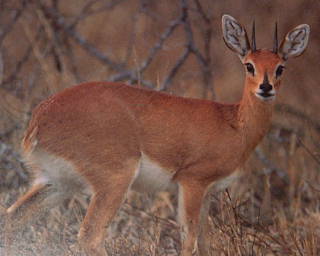
Mike Hissey
In the early sixties Mike Hissey made his entry among the rank of Kenya's white hunters. Few men had more zest for life than Hissey, And hunting was his all-consuming passion. Mike’s easygoing personality and finely tuned sense of humor made him the best of companions on safari. His privileged background was in contrast to the lives of the Poolman boys and most of the Kenya hunters of his day. Mike Hissey was born in 1924 at Workingman, Berkshire, in England, The son of a wealthy country gentleman who owned a large estate at Sidelsham , along the river Lodden. Mike recalled:
When I was old enough to handle a gun, my father bought me a 410 double-barreled hammer shotgun. He gave me one box of cartridges and told me that was the last box of shotgun shells he was ever going to buy me. I could shoot rabbits, pigeons and wildfowl and sell them at Bracknell Market each week, and with the money keep myself in ammunition. Father was as good as his word . He never bought me another round of ammunition! When I was ten years of age my father allowed me to go with him on his shoots. He was a member of two syndicate shoots. One was at Cruxeastern in Hampshire, and the other at Didcot in Berkshire. A pheasant and a partridge shoot respectively. I used to help beating and sometimes stand with my father. One day the beaters were driving pheasants out of a chalk pit And the standing guns were around the lip of the pit. A gun that was with the beaters shot at a pheasant flying straight at us, from a range of about forty yards. The pellets hit my father in the top of his legs, and also hit me in the face and chest. Luckily we were Both well clothed as it was a cold winter day. My large coat buttons were shot to pieces, and my coat in tatters. Blood was running down my face and out of my mouth. A pellet had gone Between my lips, broken a front tooth and cut my tongue. My Father was wearing plus fours and Wellington boots and his boot was filling with blood from the pellet wounds in his leg and hip. My father grabbed me and took me on a sixteen-mile ride to Reading Hospital. The nurse stripped me and I well remember hearing the pellets falling on the linoleum floor, and rolling across the Room as each garment was removed. We recovered quickly enough, and no permanent damage was done.

Mike went to Bradfield College in Berkshire, which was situated in some of the best shooting and trout-fishing country. He and three friends regularly poached and averaged seventy-five pheasant per year. Mike's luck ran out the day he was caught red-handed poaching trout. On a stretch of fishing-club water. The gentleman who nabbed Mike had a familiar face. He persuade Mike to get in his car and took him to Lord Illiffe`s mansion at Basildon:
I was ushered into the sitting room where his Lordship and Her Ladyship were having afternoon tea. I was given a first-rate dressing down, and then I was asked to sit down to have a cream bun and join them for tea. I later realized that the gentleman who had caught me was the Prime Minister of England, Neville Chamberlain.
When World War II began seventeen-year–old Mike secretly went to Reading where he was “ paid the King’s shilling” and joined the Royal Navy without his parents’ knowledge. He quickly made first lieutenant, Then saw action in Normandy before sailing for India and the Arakan offensive. He made landing against the Japanese all the way from Chittagong to Rangoon. In peacetime England Hissey thought he would live the life of a Country squire. Instead he was astonished to discover the family estate had been sold. Mike learned of a farming scheme to benefit servicemen in Kenya, and he signed up in hopes of getting his own farm and to attend an agricultural course at Egerton College of Agriculture at Njoro. Lord Egerton of Tatton originally went to Kenya in 1938 to hunt with Alan Black. Egerton liked Kenya so much he settled near Njoro, and Gave eight hundred acres of his estate to provide training for those desiring an agricultural career.
One of three attractive English sisters at Egerton College caught Hissey’s eye, and in March 1948 he married Daphne (n’ee Northcote) in Nakuru. They settled on virgin land in Trans-Nzoia district, near Mount Elgon in western Kenya. In six weeks Mike had constructed a home made from bricks and thatch. He knew he had found his paradise:

Mike routinely assisted game wardens at Mount Elgon with control Work, mostly buffalo and elephant. He was so successful the Game Department gave him complimentary elephant licenses to cover expenses. Control work began to take precedence over farming:
I made safaris from Kimilili to the southern Uganda boundary on foot, taking several days each way and checking out reports on Shamba raiding. I never shoot a shamba raider unless damage was proved and the owner of the shamba had made efforts to protect his crops. I wanted to see an attempt to keep the elephant out either with stockades or fires. All the Kitosh and Mgishu (tribes) who lived along the forest edge were great elephant eaters. Eventually the shamba raiding got very bad in the Kimilili area. The Kimilili herd had increased to such a degree-to over 400 Elephant- and for several years we took twenty-five cows per Year out of this herd alone. One time 300 native put up a temporary village to smoke the elephant meat.
In 1957 Mike met Stan Lawrence-Brown at Kitale. Stan and his client, Marge Hopkins from Spokane, Washington, were on their way to the Cherangani Mountains to hunt eastern bongo. The two men hit it off so well that Mike join Lawrence –Brown Safari as a white hunter In 1961. He was teamed on his first professional safari with David Ommanney:
